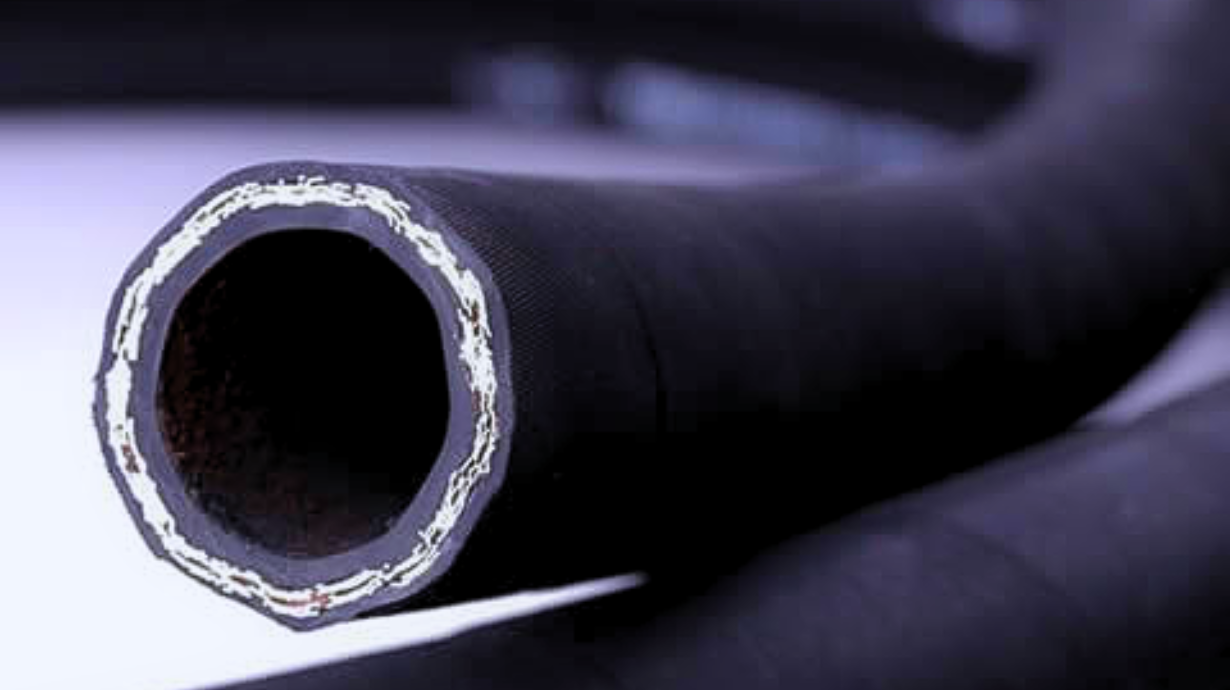A Buyer’s Guide to Hydraulic Hose Materials and Reinforcements

Hydraulic hoses play a vital role in transferring fluids under high pressure in various applications and industries. However, with so many options available, it can be difficult to know which type is right for the job. This guide breaks down the main differences between the types of hydraulic hose so you can more easily identify which is best suited for your application.
The tube material of a hose impacts the fluids and other materials suitable for transfer. Common hose materials include:
Rubber: Rubber is the most common hydraulic hose material. It offers flexibility, abrasion resistance, and affordability for general hydraulic systems with moderate pressure and temperature demands. There are many sub-categories of rubber hose, including nitrile rubber (oil-resistant) and neoprene (weather-resistant), depending on the use case.
Thermoplastic: Lightweight and flexible thermoplastic hose is ideal for tight spaces and low-pressure applications, such as tools and forklifts. Examples include nylon and polyurethane hoses. This type of hose offers good chemical resistance and strong performance, even at low temperatures.
Teflon (PTFE): Teflon hose is highly resistant to aggressive chemicals, high temperatures, and abrasion, making it the go-to option for applications like chemical processing and aerospace. This hoses’s superior performance comes at a higher cost to customers and is generally only recommended for highly demanding applications.
Stainless Steel: Stainless steel hoses are used in environments where hoses are likely to encounter extreme temeratures and corrosive or abrasive materials. These hoses are commonly used to transport aggressive fluids.
Reinforcement is the backbone of a hydraulic hose, helping to maintain its structure, even under pressure. Common reinforcement types include:
Textile Braided: This type of hose is reinforced with one or more layers of braided fabric, giving the hose good flexibility in low-pressure applications, such as return lines and air/lube lines.
Steel Wire Braided: Single, double, or even quadruple layered braids of high-tensile steel wire provide strength and pressure resistance for this type of reinforced hose. These hoses are suitable for medium-pressure applications, such as agricultural equipment and material handling.
Spiral Wire Reinforced: This type of reinforced hose has a spiral wire embedded within the hose wall, helping to balance flexibility and pressure resistance. This is ideal for demanding applications, such as construction equipment and heavy machinery.
The cover of the hydraulic hose is a protective layer that keeps the hydraulic hose safe and durable. Hose covers and sleeves, unique to specific manufacturers, may be used to protect hoses from external factors, such as high temperatures or abrasive surfaces.
All hydraulic hoses are required to meet specific safety standards. Knowing the standard of your hose ensures the compatibility and performance of your equipment.
SAE: The Society of Automotive Engineers, or SAE, sets standards for hydraulic hoses, fittings, and assemblies to ensure compatibility and performance across various manufacturers.
EN: The European Norm, or EN standard, is the widely adopted European hose standard. The EN ensures the quality and safety of hydraulic hoses by standardizing aspects such as dimensions, performance, and testing.
There are several other factors that make a hose more or less compatible with your application, including:
Pressure: Different hose types are rated for different maximum system pressures, depending on hose material, reinforcement, and size. Make sure you choose a hose rated for the maximum pressure your system will experience.
Temperature: Ensure the hose can handle the expected temperature range of your application, as well as the temperature of the environment. Certain types of hoses are specifically designed for extreme temperatures.
Flexibility: Consider the required maneuverability in your system and choose a hose with the appropriate level of flexibility.
Size & Fittings: Select the correct hose diameter and compatible fittings for your system.
Ultimately, the best hydraulic hose for you depends on your specific application requirements. Consider the factors listed here to help you make an informed decision. Consulting with a Triad Technologies hydraulics specialist is recommended for complex applications or technical uncertainties. We are happy to help match you with the hoses you need to keep your equipment moving.